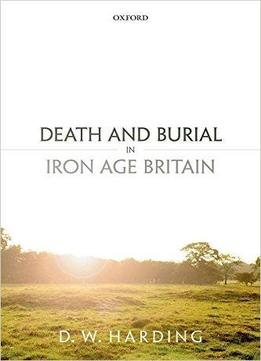
Death And Burial In Iron Age Britain
by Dennis Harding /
2016 / English / PDF
8.7 MB Download
Archaeologists have long acknowledged the absence of a regular and recurrent burial rite in the British Iron Age, and have looked to rites such as cremation and scattering of remains to explain the minimal impact of funerary practices on the archaeological record. Pit-burials or the deposit of disarticulated bones in settlements have been dismissed as casual disposal or the remains of social outcasts.
In Death and Burial in Iron Age Britain, Harding examines the deposition of human and animal remains from the period - from whole skeletons to disarticulated fragments - and challenges the assumption that there should have been any regular form of cemetery in prehistory, arguing that the dead were more commonly integrated into settlements of the living than segregated into dedicated cemeteries. Even where cemeteries are known, they may yet represent no more than a minority of the total population, so that other forms of disposal must still have been practised. A further example of this can be found in hillforts which, in addition to domestic and agricultural settlements, evidently played an important role in funerary ritual, as secure community centres where excarnation and display of the dead may have made them a potent symbol of identity. The volume evaluates the evidence for violent death, sacrifice, and cannibalism, as well as age and gender distinctions, and associations with animal burials, and reveals that 'formal' cemetery burial or cremation was for most regions a minority practice in Britain until the eve of the Roman conquest.











